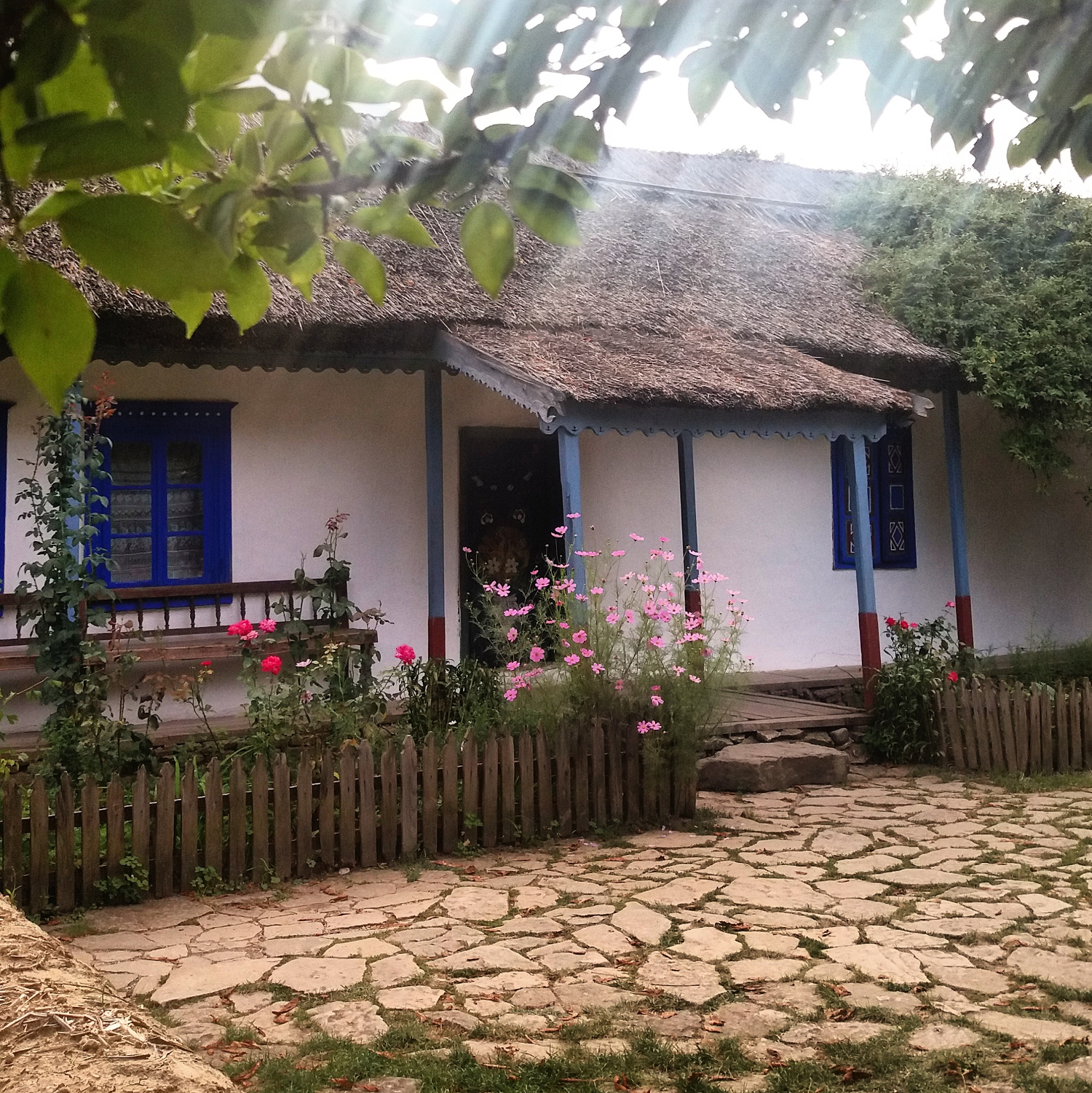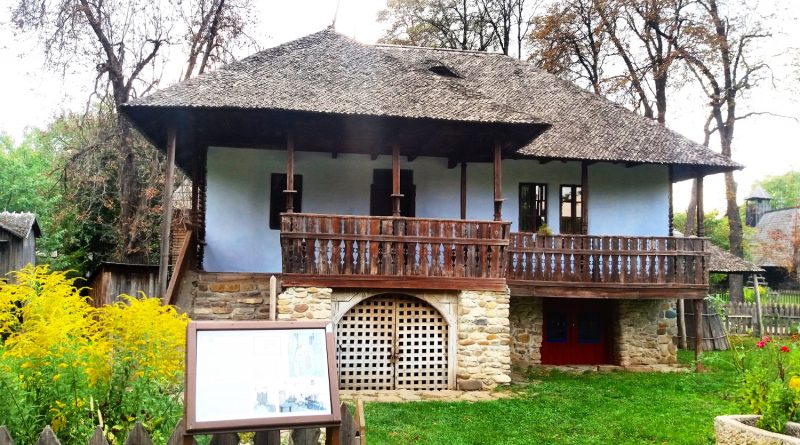The Village Museum (Muzeul Satului) a “must visit” in Bucharest, Romania
Article first published on May 31, updated and rewritten in October 2017
Top Museum in Bucharest
Every time a friend comes to Bucharest and we show them the city, this is the place we take them to. The Village Museum is the top museum in Bucharest. Every time someone asks me what’s a must visit in Bucharest, Dimitrie Gusti Village Museum (Muzeul Satului) is the answer that comes to mind.
Why you should visit the best attraction in Bucharest: the Village Museum
I never heard someone saying that they didn’t liked this museum! Even those that don’t usually go to museums loved it!
It is an open-air museum – so you actually combine taking a long walk in the nature, smell the perfume of flowers and trees and, of course, see specific traditional houses from all over Romania.
You can spend hours and hours walking the alleys and find out interesting things about each zone of Romania and their specific elements when it comes to houses. And believe me, there’s a lot to see. And everyone we took to this museum (or recommended it to) have confirmed this!
First of all you have to picture the museum: it is located next to a park and it has 100,000 m2; on this area, 272 authentic country farms and houses are laid out. The Village Museum was created in 1936 by Dimitrie Gusti, Victor Ion Popa, and Henri H. Stahl. Imagine that in ’30s there were only three such museums all over the world!
But that’s not everything.
Every day several houses are opened for the public to see on the inside. You can actually feel the local, specific, smell / perfume (yes, each area displays a specific scent due to the materials used and also to the objects used – which you will also encounter – inside the house). Each house, church, wind or water mill can be admired from the outside. And they can all be photographed from the outside – the interior can only be admired.

There are written explanations in English (and Romanian) for all the houses. While, unfortunately, there are a few museums in Romania’s capital that don’t offer this, the Village Museum in Bucharest has printred explanations in English for every building exhibited here. So you’ll easily understand how each house was, how houses evolved, where every house is from, etc. – as you already saw in a previous article when I presented you a household of rich peasants from Gorj, Romania, in 1800.
The houses are very well maintained – and they are rare. For instance, you can see here the house that’s on the 10 lei bill – and keep in mind that there are only three such houses left in the entire country!

At the Village Museum Bucharest you can see houses that no longer exist – it’s the case of the half-buried houses.



The Village Museum is one of the most instagrammable places in Bucharest. As instagram is used by more and more people across the globe – and as travelers love to share awesome places from their trips -, this is a must visit in Romania’s capital as practically each house, church, windmill, building turns into an excellent instagram shot.
Having all these houses gathered together gives you an image of the quintessence of the Romanians (along with the Romanian Peasant Museum which we’ll talk about in a different post). You’ll be able to see the roots of Romania. Each house, each object has its own purpose and it had a special place in the house, symbolizing something. It is indeed a walk through the history.
You can visit the museum all year long. The Village Museum is always great. Each season brings its own scent of specific flowers or fruits in the trees. Yes, it is a great place to spend a day (or at least a few hours). And it is a great place for kids as well as for adults.

You’ll see from houses build half under and half above ground – to impressive peasant homes from Maramures, Muntenia, Moldova, Oltenia and Transilvania. You will also see different (wooden) churches, barns, stables and so on. Since the museum is located next to one of the largest parks in Bucharest – Herastrau – you’ll have the chance to enjoy a walk on the lakeside and admire some boats.
Yes, I was not exagerating when I said that the Dimitrie Gusti Village Museum is the best attraction in Bucharest.
There is a NEW VILLAGE
Inauguared just a few years ago, the New Village offers even more houses – recent ones, from the XIX and XX centuries. There’s even an inn exhibited here.
There are also live animals here – meaning birds, sheep, goats and… you’ll see. And you can feed them (there’s hay available on site, no extra charge, don’t bring food from the outside).



How to visit the Village Museum in Bucharest
You can choose between the printed explanations and a guided tour (trust me you’ll find out interesting data – even we, Romanians, found out interesting stuff from a guide for foreign tourists that was guiding the group on the same track that we chose! 🙂 ).
I recommend stopping by each house, seeing even those that are not opened inside. You can still learn a lot about Romania. I also recommend booking at least 2-3 hours here – if you don’t want to just run.
There is also a restaurant with a terrace – they grow many plants and vegetables next to the premises, so all is fresh.
Also, if you are visiting with a Romanian person, you may want to ask the curators more details about each house/church, etc. – they know even more than the explanations say.

I am Romanian and I have visited this museum many times – but each time there is something new I discover: a new house I get to look closer at, a new detail I didn’t notice before, a new color or a distinct object, or a new information about a house or item.
Be sure to bring a bottle of juice or water, especially during the summer – you will definitely need it 🙂 You can also buy one (or an ice-cream) from the restaurant inside the museum.
At the entrance (which is as well an exit, but there is a secondary exit directly into the Herastrau park) you will find a souvenir shop. It has many specific objects from all over the country, usually local objects hand made by traditional workers.

So the recommendation is clear: if you come to Bucharest and you’d like to see something special, have a visit at The Village Museum (Muzeul Satului). The address is Kiseleff 28-30, 1st district; you can find more contact information (including e-mail) here.
A must visit in Bucharest: The Village Museum. Will you visit it? Have you visit it?

Note: the pictures are from different visits in different seasons. Also, these only a few of the houses you can admire here!




I was there just two weeks ago myself. Very interesting place indeed.
This looks like something out of a dream – these houses are tiny little treasures and it is wonderful to see them preserved like this. Romania has always been on my list to visit and I am storing up articles like this to ensure that I see the best of what Romania has to offer.
Beautiful houses! It kind of reminds me of “The Old city” we have in Denmark where you see these old houses, buildings, shops etc., the houses back then were so cute! I am not the museum type, but Im quite sure I would love this outdoor museum as well 🙂
Thanks for sharing, kind regards
Nana
What a cool idea. I’ve never been to a museum like this but it sounds amazing. I would love to visit this if I am ever in Romania.
So cute! What a fun place to visit! I love the colorful exterior of the old saloon! 🙂
I’ve been to Romania twice now but only transited through Bucharest. I’d love to stay awhile next time!
Oh, I’m really glad to read your post. When I went to Bucharest a couple of years ago, we only had a couple of days there, so we couldn’t see it all. And we finally decided to skip the Village Museum.
So at least I can see what it is about and plan to visit it next time. 🙂
One of the best things that this museum does is preserving the Romanian traditions and important moments from the Romanian culture at its core: in the Romanian village.